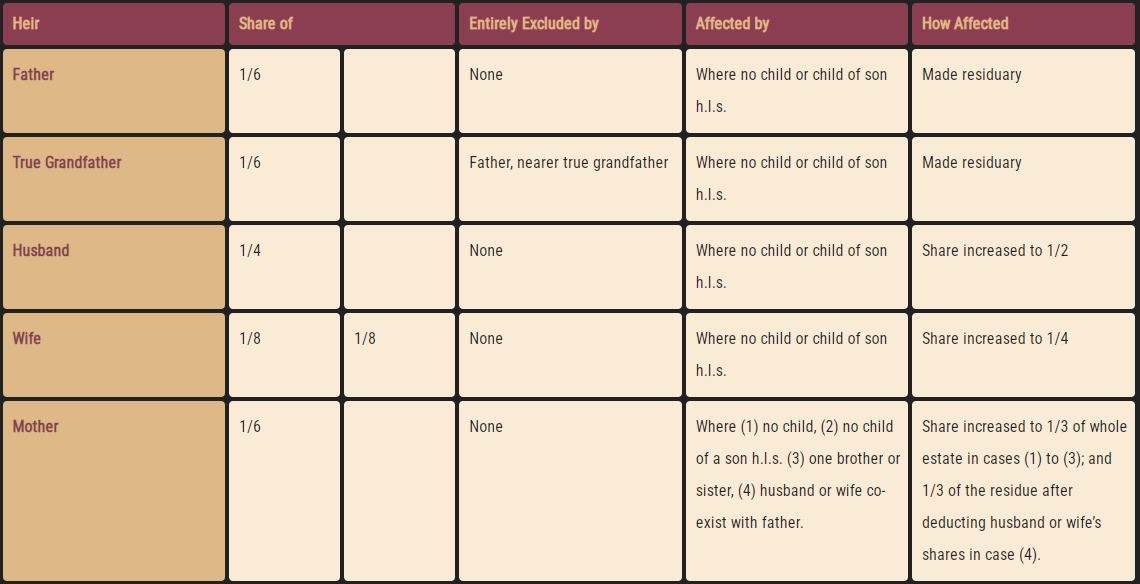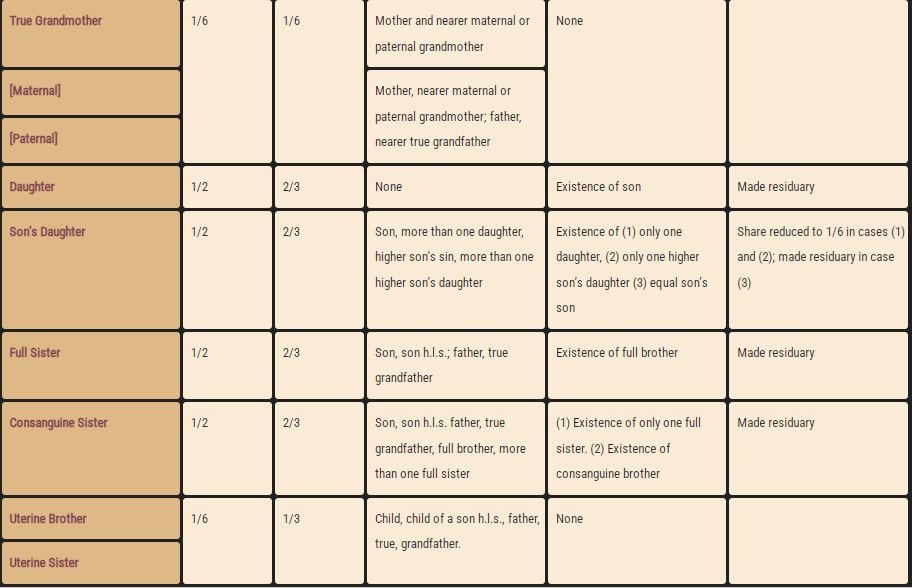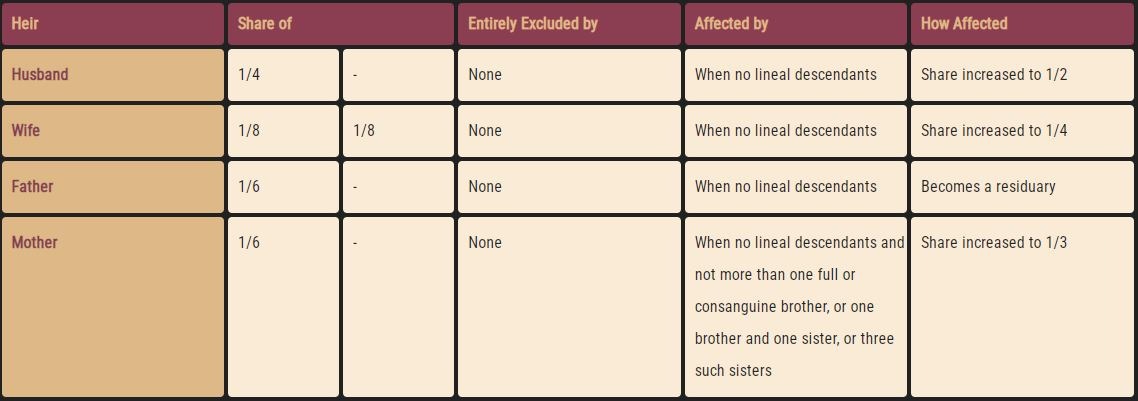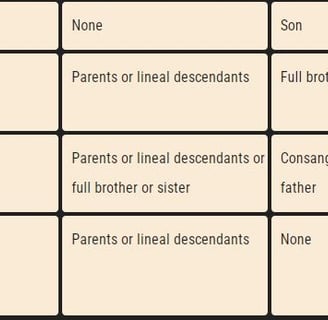Inheritance laws are statutes and rules that determine how individuals receive assets from the estate of a deceased family member, these laws ensure that beneficiaries can acquire some form of inheritance in the event that a will was never written or doesn't cover all of the deceased person's assets, whereas a succession is the process of settling a deceased person's estate and distributing the property to those who inherit after the debts are paid, the term 'succession' may also be used to refer to the estate of a person leaves behind at death.
The Succession Act was enacted in part to correct any unfair treatment of people who were dependent upon the deceased and were not provided for in the deceased's will.
Pakistan being a Muslim majority country and the constitution providing for Islamic Law to govern all laws in the country, enforces the Islamic law of inheritance to be enacted in the country. In the absence of a comprehensive code/legislation on Inheritance, the courts implement the traditional Islamic rules of inheritance in accordance to the different Muslim sects. Currently,
RIZWAN & ASSOCIATES - LLP | INHERITANCE & SUCCESSION LAW- PAKISTAN


only the Succession Act of 1925 and the Muslim Family Law Ordinance 1961 under Section 4, provides for a provision relating to inheritance and succession under Pakistani laws.
The Islamic law on inheritance varies according to the Muslim sects. The two primary classifications include Sunni law on inheritance, and Shi’ite Law on Inheritance.
SUNNI LAW OF INHERITANCE
Under Sunni Law, there are three kinds of legal heirs, Sharers, Residuary and Distant Kindreds. The sharers or Quranic heirs, are entitled to a fixed share of inheritance. Residuaries are those who do not take a share but succeed to the residue left after the claims of the sharers have been satisfied. While the distant kindreds inherit when there are neither sharers nor residuaries.
SHARERS OR QURANIC HEIRS
After the payment of the funeral expenses, debts and legacies, the estate called the “net estate” is distributed amongst the sharers according to the chart given below. Column I provide the rate applicable for distribution of the estate when the sharer is alive. Column III provides the instance when the sharer is excluded by another heir. Column IV provides the affect, when the sharer is not entirely excluded form inheritance and the resultant effect of partial exclusion is given under Column V.




Table: Sharers or Quranic Heirs
RESIDUARIES
If there are no sharers or if there are sharers, but there is a residue left over, after satisfying the sharers, the whole inheritance or the residue, as the case may be, devolves on the residuary in the following order:
The descendants
Then the ascendants
Then the collateral III
Finally, the Collaterals IV
DISTANT KINDRED
If there are neither sharers nor residuary, the inheritance is divided among distant kindred. Provided that when the only sharer is a husband or a wife, and there are no residuary, then after satisfying the share of the husband or the wife, the residue is taken by the distant kindred.
Distant kindred's, like reliquaries, are divided into four classes, which are listed below in the order of precedence:
Descendants of the deceased
Ascendants of the deceased
Descendants of the parents of the deceased
Descendants of grand-parents (true or false) so that the descendants of the nearer grand-parents exclude those of the farther ones
SHIA LAW OF INHERITANCE
Shia law classifies heirs into two main classes, namely, sabab or special clause, and Nasab or blood relationship which is further divided into heirs by legal relationship and heirs by marriage including husband and wife. Blood relationships are further divided into three classes, which includes parents, children and lineal descendants, grandparents, brothers and sisters and their descendants, paternal and maternal uncles and aunts.
In comparison to the Sunni Law of Inheritance, Shia law only recognizes Sharers and Residuaries. Under Shia law, only 9 sharers are recognized. The descendants of the sharers are also classified as sharers. Anyone who is not a sharer is then regarded as a residuary. The table below gives the distribution of assets between sharers.


Table: Sharers as per Shia Law
SUCCESSION LAW
In order to obtain the inherited property of the propositus, the national laws of the country come into play. Such transfer of movable and immovable property from the deceased to the successors is done in accordance to federal The Succession Act 1925 and the provincial legislation Letters of Administration and Succession Certificates Act, 2020.
The primary purpose of the Letters of Administration and Succession Certificates Act is to ensure the speedy issuance of successions certificates and letters of administration. The Act also establishes a Succession Facilitation Unit in NADRA offices under Section 3, which is authorized to receive applications for grant of letters of administration and succession certificates; process and assess these applications to decline or accept them and maintain an online portal for record keeping.
As per Sec. 6, the application for grant of letters of administration is to be accompanied by the death certificate of the deceased; list of legal heirs and copies of their national identity cards; an authorization by the legal heirs in the favour of the applicant; and details of immovable and movable property. Such application is subject to receival of an objection claim. Where no such claim is received, NADRA issues the letter of administration or succession certificate equivalent to those issued under the Succession Act, 1925 by the District Judge or High Court.
However, in case an objection for the grant of letter of administration or succession certificate is received, such objection is resolved through application of the Succession Act, 1925, where an application shall be made to the District Judge or to the High Court under its concurrent jurisdiction.
An application for grant of letter of administration is made under Sec. 278 while an application for grant of probate is to be made under Sec. 276. Any caveat against such application shall also be lodged and submitted to the Court as well. The Court also has the power to examine the applicant in person, call for more evidence, issue citations to all persons having an interest in the property. After satisfaction the Court shall issue the letter of administration or probate under the seal of the Court as per Sec. 289 and 290 of the Act.
Similarly, District Judges have the authority to entertain applications made to issue succession certificates under the same Act, as per Sec. 371. As per Sec. 372, the application shall state the time of the death of the deceased, the ordinary residence of the deceased, the family or other near relatives of the deceased, the right in which the petitioner claims, the absence of any impediments and the debts and securities in respect of which the succession certificate is to be issued.
After receival of such application, the Court after satisfying itself that there are grounds for entertaining the application, shall fix a date for hearing and issue notices of the same. Upon conclusion of such hearing, the Court shall issue a succession certificate.


OUR CORE COMPETENCIES
COLLABORATIVE SKILLSET
Collaborative lawyers trust the wisdom of the group; lone wolves and isolationists do not do any good anymore.
EMOTIONAL INTELLIGENCE
Distant, detached lawyers are relics of the 20th century, the market no longer wants a lawyer who is only half a person.
TECHNOLOGICAL AFFINITY
If you can not effectively and efficiently use e-communications, and mobile tech, you might as well just stay home.
TIME MANAGEMENT
Virtually a substantial part of lawyers difficulties in this regard lie with their inability to prioritise their time.

About
Umeed Law Associates (LLB). Started in 2018 to provide legal services and also launched its website www.umeedlaw.com at Rawalpindi to fulfill the growing needs of the people searching the internet for immediate and easy access to understandable legal advise.
Adderss
2nd floor Umeed Law Chamber # 11 Zamrud khan block Kachehri, Rawalpindi.
Mobile: 03459468699
= 03189468699
Email: advmrizwanawan@gmail.com
© 2024. All rights reserved.
